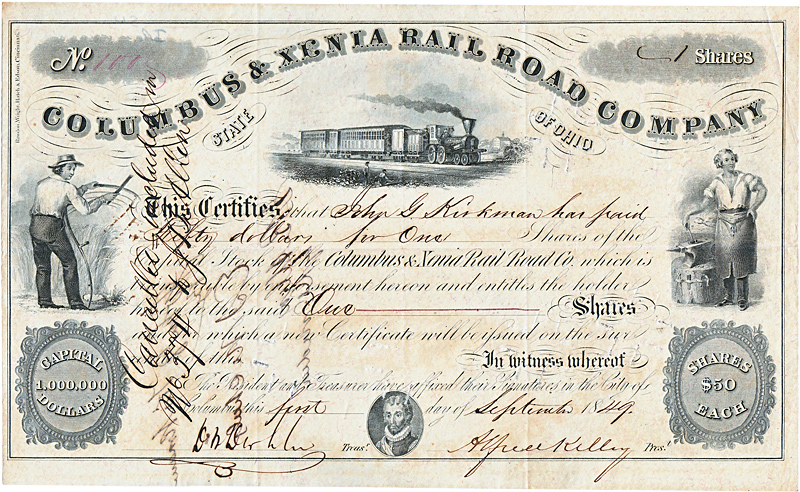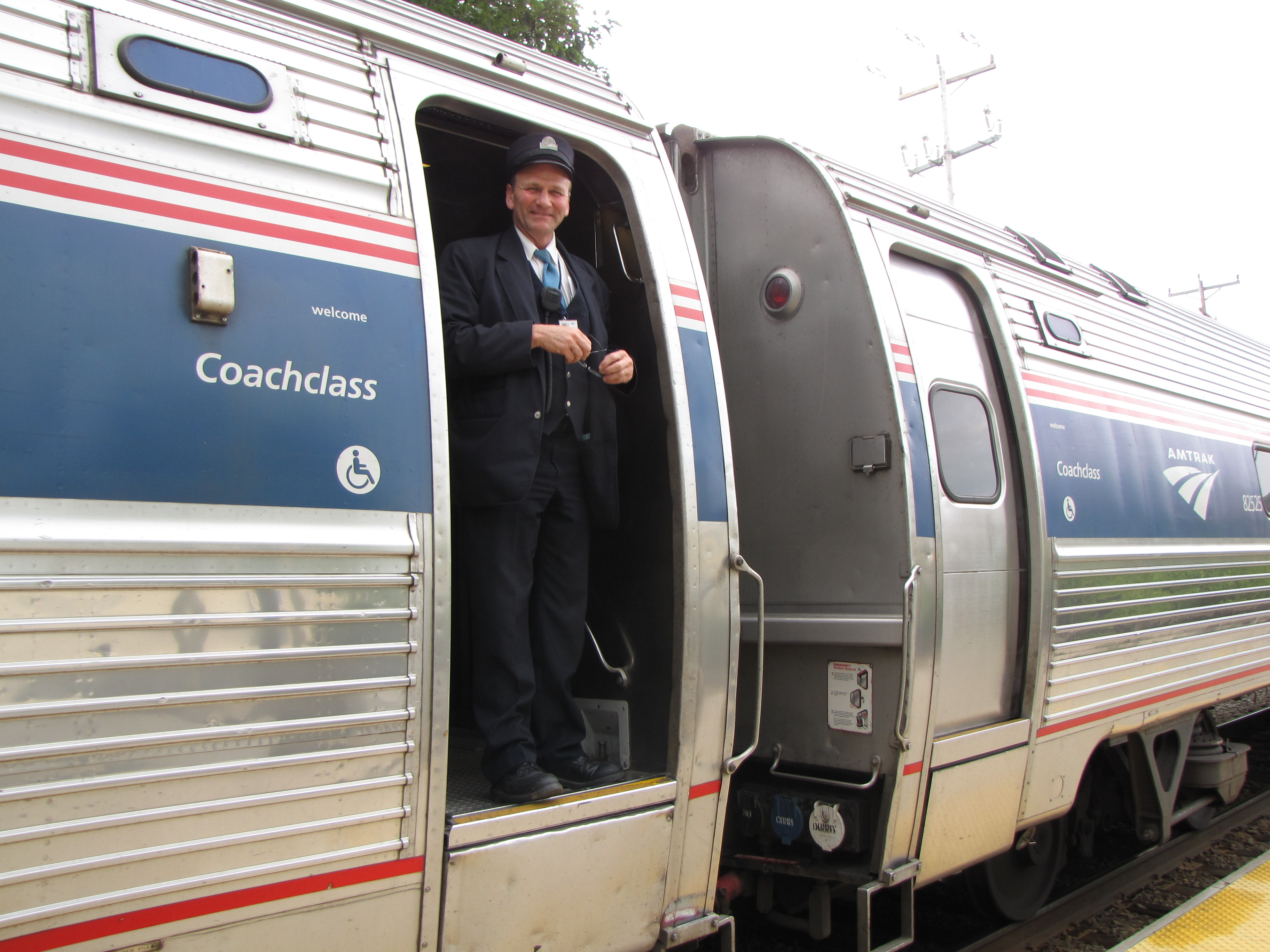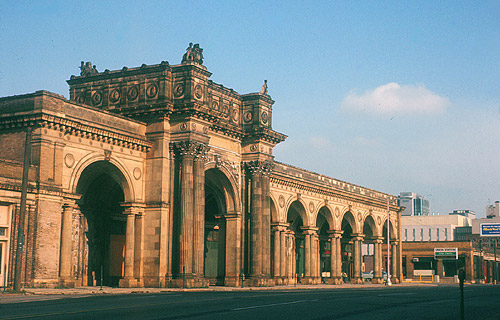|
Columbus And Xenia Railroad
The Columbus and Xenia Railroad was a railroad which connected the city of Columbus, Ohio, Columbus, with the town of Xenia, Ohio, Xenia in the U.S. state, state of Ohio in the United States. Construction began in October 1847, and the line opened in February 1850. Connecting with the Little Miami Railroad, it created the first rail route from Cincinnati, Ohio, Cincinnati to Columbus. Formation and fundraising The Columbus and Xenia Railroad (C&X) was chartered on March 12, 1844. Among its early leaders was William Dennison (Ohio governor), William Dennison, the future Governor of Ohio. The Little Miami Railroad linked Cincinnati and Xenia in 1845, and the C&X was intended to link Columbus to Xenia—creating the first rail link between Columbus and Cincinnati. In its charter, the C&X was authorized to issue $500,000 ($ in dollars) in stock, but the incorporators had difficulty raising funds and initiating construction. Two years later, the state authorized Greene County, Ohio, ... [...More Info...] [...Related Items...] OR: [Wikipedia] [Google] [Baidu] |
Little Miami Railroad
The Little Miami Railroad was a railway of southwestern Ohio, running from the eastern side of Cincinnati to Springfield, Ohio. By merging with the Columbus and Xenia Railroad in 1853, it created the first through-rail route from the important manufacturing city of Cincinnati to the state capital, Columbus, Ohio, Columbus. In this period, railroads were important for creating connections between the important waterways of the Great Lakes and the Ohio River, which were major transportation routes for products to other markets. The LMRR's importance declined later in the 19th century, after three major railroads from the East built lines across the Allegheny Mountains and established east–west transportation systems through the state. It continued independent operations until 1981, after being absorbed by Conrail during the period of extensive railroad restructuring in the late 20th century. History The Little Miami was incorporated on March 11, 1836. Its first president, who se ... [...More Info...] [...Related Items...] OR: [Wikipedia] [Google] [Baidu] |
Rolling Stock
The term rolling stock in the rail transport industry refers to railway vehicles, including both powered and unpowered vehicles: for example, locomotives, freight and passenger cars (or coaches), and non-revenue cars. Passenger vehicles can be un-powered, or self-propelled, single or multiple units. A connected series of railway vehicles is a train (this term applied to a locomotive is a common misnomer). In North America, Australia and other countries, the term consist ( ) is used to refer to the rolling stock in a train. In the United States, the term ''rolling stock'' has been expanded from the older broadly defined "trains" to include wheeled vehicles used by businesses on roadways. The word ''stock'' in the term is used in a sense of inventory. Rolling stock is considered to be a liquid asset, or close to it, since the value of the vehicle can be readily estimated and then shipped to the buyer without much cost or delay. The term contrasts with fixed stock (infrastru ... [...More Info...] [...Related Items...] OR: [Wikipedia] [Google] [Baidu] |
Barn
A barn is an agricultural building usually on farms and used for various purposes. In North America, a barn refers to structures that house livestock, including cattle and horses, as well as equipment and fodder, and often grain.Allen G. Noble, ''Traditional Buildings: A Global Survey of Structural Forms and Cultural Functions'' (New York: Tauris, 2007), 30. As a result, the term barn is often qualified e.g. tobacco barn, dairy barn, cow house, sheep barn, potato barn. In the British Isles, the term barn is restricted mainly to storage structures for unthreshed cereals and fodder, the terms byre or shippon being applied to cow shelters, whereas horses are kept in buildings known as stables. In mainland Europe, however, barns were often part of integrated structures known as byre-dwellings (or housebarns in US literature). In addition, barns may be used for equipment storage, as a covered workplace, and for activities such as threshing. Etymology The word ''barn'' comes f ... [...More Info...] [...Related Items...] OR: [Wikipedia] [Google] [Baidu] |
Request Stop
In public transport, a request stop, flag stop, or whistle stop is a stop or station at which buses or trains, respectively, stop only on request; that is, only if there are passengers or freight to be picked up or dropped off. In this way, stops with low passenger counts can be incorporated into a route without introducing unnecessary delay. Vehicles may also save fuel by continuing through a station when there is no need to stop. There may not always be significant savings on time if there is no one to pick up because vehicles going past a request stop may need to slow down enough to be able to stop if there are passengers waiting. Request stops may also introduce extra travel time variability and increase the need for schedule padding. The appearance of request stops varies greatly. Many are clearly signed, but many others rely on local knowledge. Implementations The methods by which transit vehicles are notified that there are passengers waiting to be picked up at a reque ... [...More Info...] [...Related Items...] OR: [Wikipedia] [Google] [Baidu] |
Flatcar
A flatcar (US) (also flat car, or flatbed) is a piece of rolling stock that consists of an open, flat deck mounted on a pair of trucks (US) or bogies (UK), one at each end containing four or six wheels. Occasionally, flat cars designed to carry extra heavy or extra large loads are mounted on a pair (or rarely, more) of bogies under each end. The deck of the car can be wood or steel, and the sides of the deck can include pockets for stakes or tie-down points to secure loads. Flatcars designed for carrying machinery have sliding chain assemblies recessed in the deck. Flatcars are used for loads that are too large or cumbersome to load in enclosed cars such as boxcars. They are also often used to transport intermodal containers (shipping containers) or trailers as part of intermodal freight transport shipping. Specialized types Aircraft parts flatcars Aircraft parts were hauled via conventional freight cars beginning in World War II. However, given the ever-increasing size of ... [...More Info...] [...Related Items...] OR: [Wikipedia] [Google] [Baidu] |
Conductor (rail)
A conductor (North American English) or guard (Commonwealth English) is a train crew member responsible for operational and safety duties that do not involve actual operation of the train/locomotive. The ''conductor'' title is most common in North American railway operations, but the role is common worldwide under various job titles. In Commonwealth English, a conductor is also known as guard or train manager. The responsibilities of a conductor or guard typically include the following: * Ensuring that the train follows applicable safety rules and practices * Making sure that the train stays on schedule starting from the stations * Opening and closing power operated doors * Selling and checking tickets, and other customer service duties * Ensuring that any cars and cargo are picked up and dropped off properly * Completing en-route paperwork * Directing the train's movement while operating in reverse * Coupling or uncoupling cars * Assisting with the setting out or picking up o ... [...More Info...] [...Related Items...] OR: [Wikipedia] [Google] [Baidu] |
Columbus Union Station (first Building)
Columbus Union Station was an intercity train station in Downtown Columbus, Ohio, near The Short North neighborhood. The station and its predecessors served railroad passengers in Columbus from 1851 until April 28, 1977. The first station building was the first union station in the world, built in 1851. Its replacement was built from 1873 to 1875, just before demolition of the first station building. After traffic problems on High Street, as well as increased rail traffic became problematic, a new station was planned by Daniel Burnham beginning in 1893. The new station opened in 1897, and its arcade along High Street was finished in 1899. By 1928, part of the arcade was demolished. Passenger service significantly declined from the 1950s to the 1970s. The arcade was demolished in 1976 to make way for a new convention center, although it had been placed on the National Register of Historic Places two years prior. Train service stopped at Union Station in 1977, and the remaining port ... [...More Info...] [...Related Items...] OR: [Wikipedia] [Google] [Baidu] |
United Kingdom
The United Kingdom of Great Britain and Northern Ireland, commonly known as the United Kingdom (UK) or Britain, is a country in Europe, off the north-western coast of the continental mainland. It comprises England, Scotland, Wales and Northern Ireland. The United Kingdom includes the island of Great Britain, the north-eastern part of the island of Ireland, and many smaller islands within the British Isles. Northern Ireland shares a land border with the Republic of Ireland; otherwise, the United Kingdom is surrounded by the Atlantic Ocean, the North Sea, the English Channel, the Celtic Sea and the Irish Sea. The total area of the United Kingdom is , with an estimated 2020 population of more than 67 million people. The United Kingdom has evolved from a series of annexations, unions and separations of constituent countries over several hundred years. The Treaty of Union between the Kingdom of England (which included Wales, annexed in 1542) and the Kingdom of Scotland in 170 ... [...More Info...] [...Related Items...] OR: [Wikipedia] [Google] [Baidu] |
Wales
Wales ( cy, Cymru ) is a Countries of the United Kingdom, country that is part of the United Kingdom. It is bordered by England to the Wales–England border, east, the Irish Sea to the north and west, the Celtic Sea to the south west and the Bristol Channel to the south. It had a population in 2021 of 3,107,500 and has a total area of . Wales has over of coastline and is largely mountainous with its higher peaks in the north and central areas, including Snowdon (), its highest summit. The country lies within the Temperateness, north temperate zone and has a changeable, maritime climate. The capital and largest city is Cardiff. Welsh national identity emerged among the Celtic Britons after the Roman withdrawal from Britain in the 5th century, and Wales was formed as a Kingdom of Wales, kingdom under Gruffydd ap Llywelyn in 1055. Wales is regarded as one of the Celtic nations. The Conquest of Wales by Edward I, conquest of Wales by Edward I of England was completed by 1283, th ... [...More Info...] [...Related Items...] OR: [Wikipedia] [Google] [Baidu] |
Franklinton, Columbus, Ohio
Franklinton is a Neighborhoods in Columbus, Ohio, neighborhood in Columbus, Ohio, just west of Downtown Columbus, Ohio, its downtown. Settled in 1797, Franklinton is the first American settlement in Franklin County, Ohio, Franklin County, and was the county seat until 1824. As the city of Columbus grew, the city annexed and incorporated the existing settlement in 1859. Franklinton is bordered by the Scioto River on the north and east, Harmon Avenue on the east, Stimmel Road and Greenlawn Avenue on the south, and I-70, Interstate 70 on the west. Its main thoroughfare is West Broad Street (Columbus, Ohio), Broad Street, one of the city's two main roads. A portion of the neighborhood is sometimes called The Bottoms because much of the land is subject to flooding from the Scioto River, Scioto and Olentangy River, Olentangy rivers, and a floodwall is required to contain the rivers and protect the area from floods. The low-lying bottom land was well suited for farming, with the river se ... [...More Info...] [...Related Items...] OR: [Wikipedia] [Google] [Baidu] |
Track Bed
The track bed or trackbed is the groundwork onto which a railway track is laid. Trackbeds of disused railways are sometimes used for recreational paths or new light rail links. According to Network Rail, the trackbed is the layers of ballast and sub-ballast above a prepared subgrade/formation (see diagram). It is designed primarily to reduce the stress on the subgrade. Other definitions include the surface of the ballast on which the track is laid,, p. 386. the area left after a track has been dismantled and the ballast removed or the track formation beneath the ballast and above the natural ground. The trackbed can significantly influence the performance of the track, especially ride quality of passenger services. See also * Embankment (transportation) * Roadbed * Subgrade In transport engineering, subgrade is the native material underneath a constructed road,http://www.highwaysmaintenance.com/drainage.htm The Idiots' Guide to Highways Maintenance ''highwaysmaintenence. ... [...More Info...] [...Related Items...] OR: [Wikipedia] [Google] [Baidu] |








